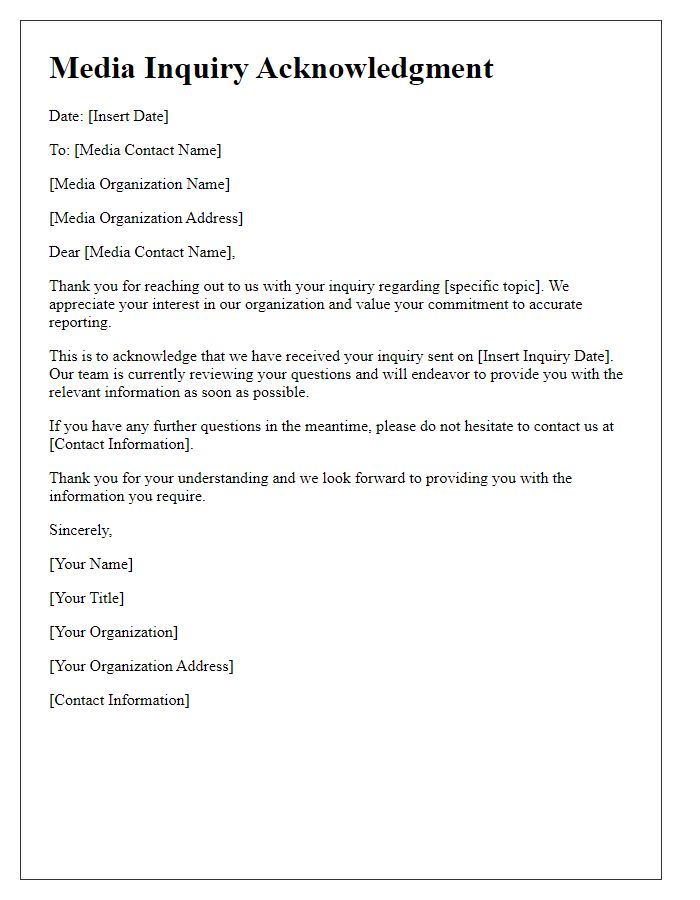When it comes to handling media inquiries, having a solid acknowledgment letter template is crucial for maintaining professionalism and clarity. This template not only ensures that you recognize the media's outreach but also communicates your commitment to providing timely and accurate information. By crafting a thoughtful response, you're not just responding; you're fostering a positive relationship with the media. Curious to see how you can enhance your communication strategy? Read on for the complete guide!

Professional tone
Media inquiries require careful management and professional response. Addressing incoming requests promptly is crucial for maintaining a positive public image. An acknowledgment should include details about the date of inquiry, name of the media outlet, and nature of the request. Important information can mirror the organization's values and commitment to transparency. Moreover, providing estimated timelines for further communication enhances trust and demonstrates professionalism. Remember to express appreciation for the media's interest, as this fosters a collaborative relationship. Accurate contact information should also be provided for efficient follow-up.
Concise language
Media inquiries regarding specific events or issues are acknowledged through this process, ensuring timely communication. Journalists and reporters can expect a written response within 48 hours. Please provide detailed information about the inquiry, including the deadline, to facilitate prompt assistance. Our media relations team is dedicated to maintaining transparent and effective dialogue, enhancing relationships with media professionals. Thank you for your interest in our organization.
Clear acknowledgment
Media inquiries require a prompt response to ensure transparency and professionalism. Acknowledgment should include specifics such as the date received, the name of the media outlet (e.g., The New York Times), and the journalist's name (e.g., Jane Doe). This establishes a record of the inquiry and the commitment to respond. Additionally, addressing the inquiry's topic, whether it's about recent press releases or events such as product launches, can demonstrate attentiveness. Indicating an estimated timeline for further communication, for example, "within 48 hours," helps manage the expectations of the media outlet while reinforcing the organization's responsiveness.
Contact information
Media inquiries can significantly impact an organization's public relations strategy, requiring timely and professional responses. Contact information, typically consisting of names, phone numbers, and email addresses, is vital for ensuring smooth communication. For organizations like public relations firms or corporate entities, providing accurate contact information allows journalists and media representatives to connect effectively. Including a designated media relations officer's name (like Jane Doe), their direct line (such as +1-555-0123), and an official email address (e.g., media@company.com) streamlines the process. This facilitates inquiries regarding press releases, event coverage, or any other relevant media engagements. Maintaining updated contact details ensures swift responses to media questions, enhancing the organization's credibility and visibility in the industry.
Response timeframe
Typically, media inquiries require prompt attention to ensure timely dissemination of information. Acknowledging such inquiries is crucial for maintaining relationships with journalists and media outlets. The standard response timeframe is usually within 24 to 48 hours, depending on the complexity of the request. This timeframe allows for information gathering or coordination with relevant departments. Clear communication regarding the expected response duration enhances credibility. It also reassures the inquiring party that their request is valued and being addressed seriously. Thus, effectively managing media inquiries fosters transparency and builds trust within the media landscape.
Letter Template For Acknowledgement Of Media Inquiries Samples
Letter template of response to media inquiries for coverage appreciation.













Comments